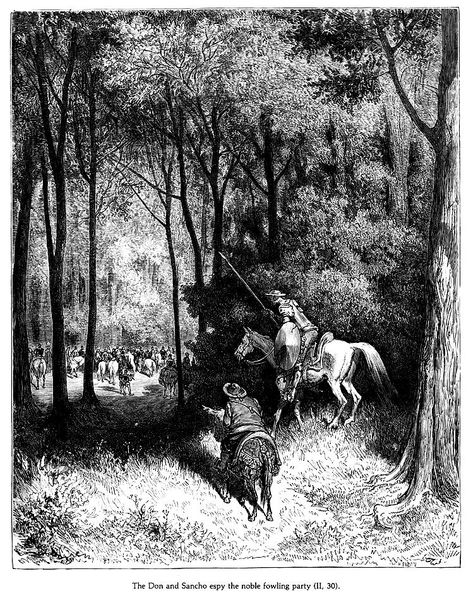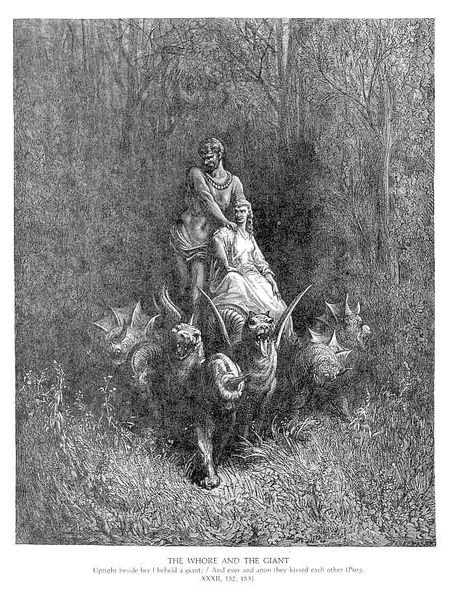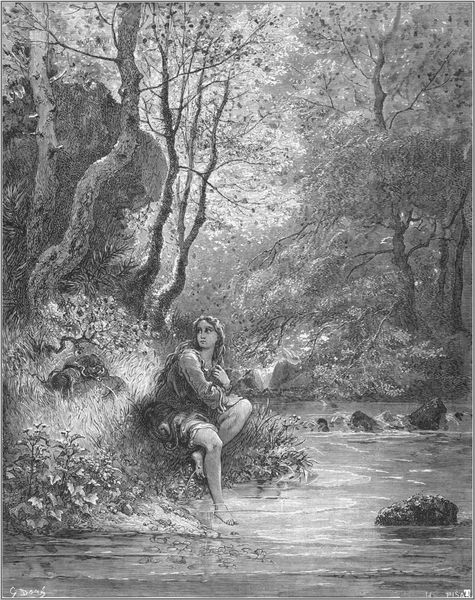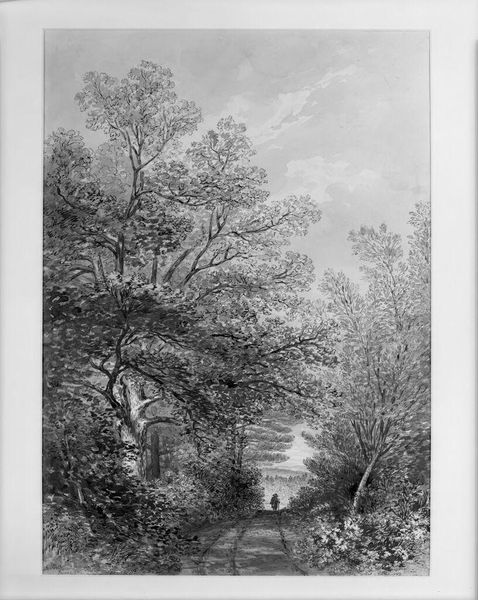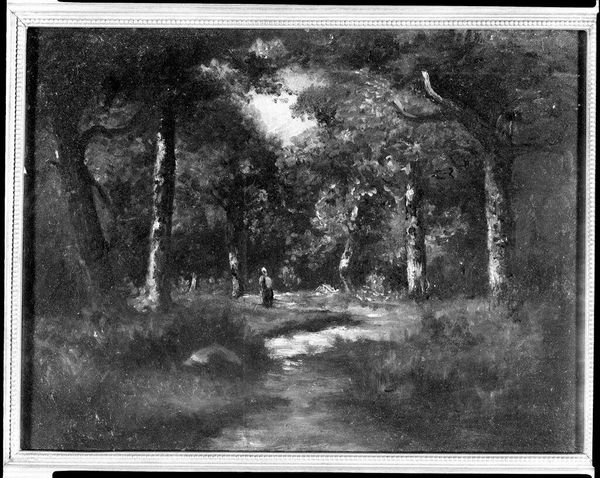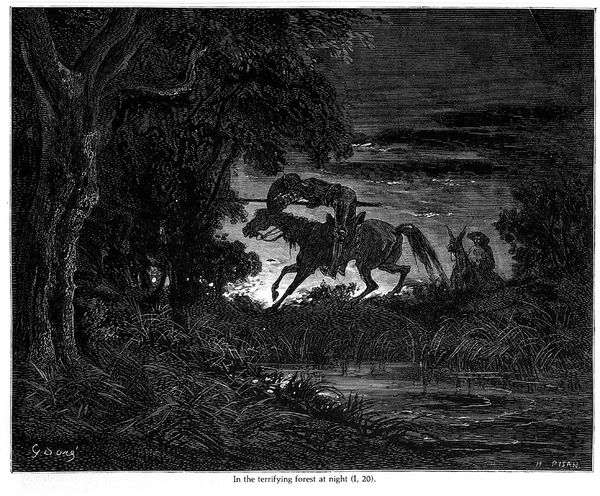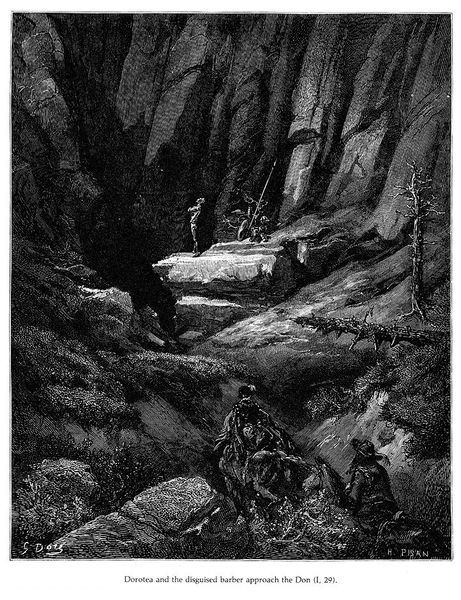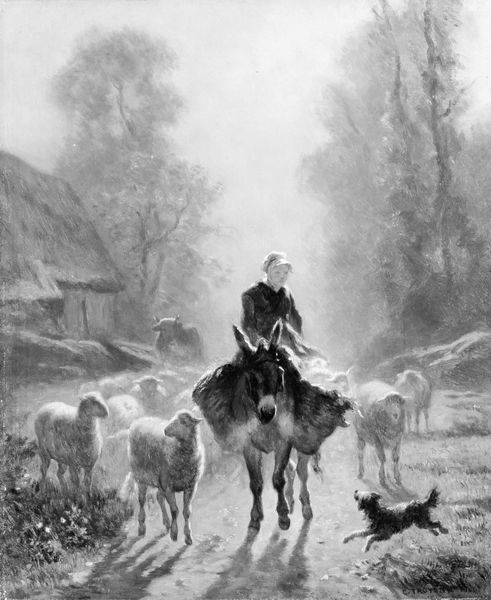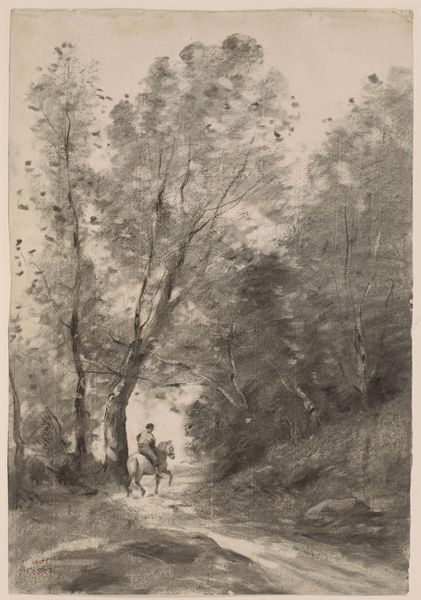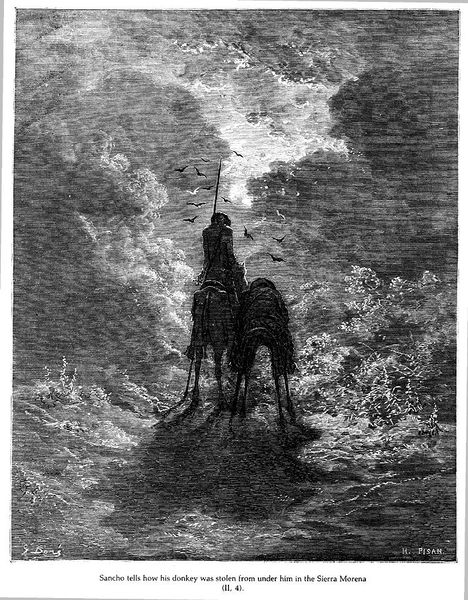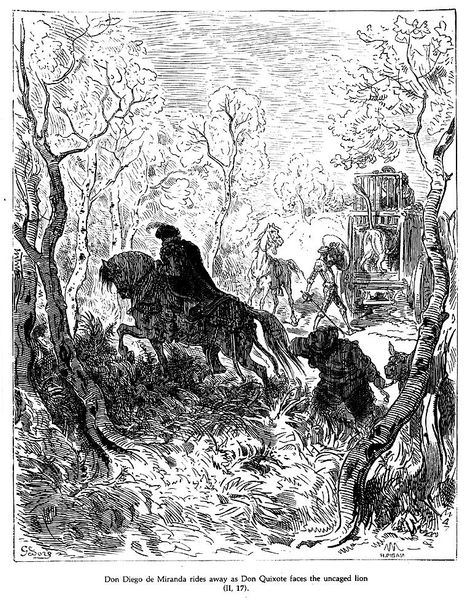
drawing, photography, woodcut
#
tree
#
drawing
#
animal
#
landscape
#
figuration
#
photography
#
tree
#
forest
#
plant
#
romanticism
#
woodcut
#
horse
#
men
#
line
#
nature
Copyright: Public domain
Curator: Here we have Gustave Doré’s woodcut, *Don Quixote*. It’s a rather striking black and white illustration that depicts the knight errant amidst a lush landscape. Editor: It's a dramatic scene. The figure of Don Quixote is dwarfed by the wild, almost menacing forest. You immediately sense his vulnerability and perhaps even his folly. Curator: Absolutely. The Romantic sensibility is very much present here. Notice how Doré uses light and shadow to create a sense of depth and mystery, almost reminiscent of the sublime. The forest, the trees, all contribute to an almost otherworldly atmosphere. Think of the dark forests in fairy tales—a place of both wonder and peril. Editor: And the figure of Quixote himself. He’s forever mythologized as this eccentric, delusional figure. He represents resistance against a disenchanted, materialist world. Doré underscores his idealism, his hopeless quest to revive chivalry within an environment of looming capitalist interests. Curator: Consider, too, the horse and rider as enduring symbols. The horse embodies power and instinct, while the rider symbolizes reason and control. Quixote’s disheveled appearance, juxtaposed with the chaotic beauty of the natural world, emphasizes the conflict between illusion and reality. The symbol of a knight is so powerful. It's so entrenched in the cultural memory. Editor: But there's also the critical reading: Quixote can be seen as a problematic figure—an entitled hidalgo obsessed with a glorified past, completely divorced from the realities of his own social context. It prompts discussions about social hierarchies and how fantasies about idealized identities often collide with injustice and inequality. The work is more complicated than it first appears. Curator: That’s what makes the piece so fascinating, it reflects the power of visual language. These images tap into collective cultural understandings and subconscious associations that reach across centuries. They have enduring emotional resonance. Editor: It is the kind of work that stays with you, prompting conversations and challenging you to view its familiar story through an ever-changing perspective. Curator: A thought-provoking interpretation. Thank you.
Comments
No comments
Be the first to comment and join the conversation on the ultimate creative platform.
